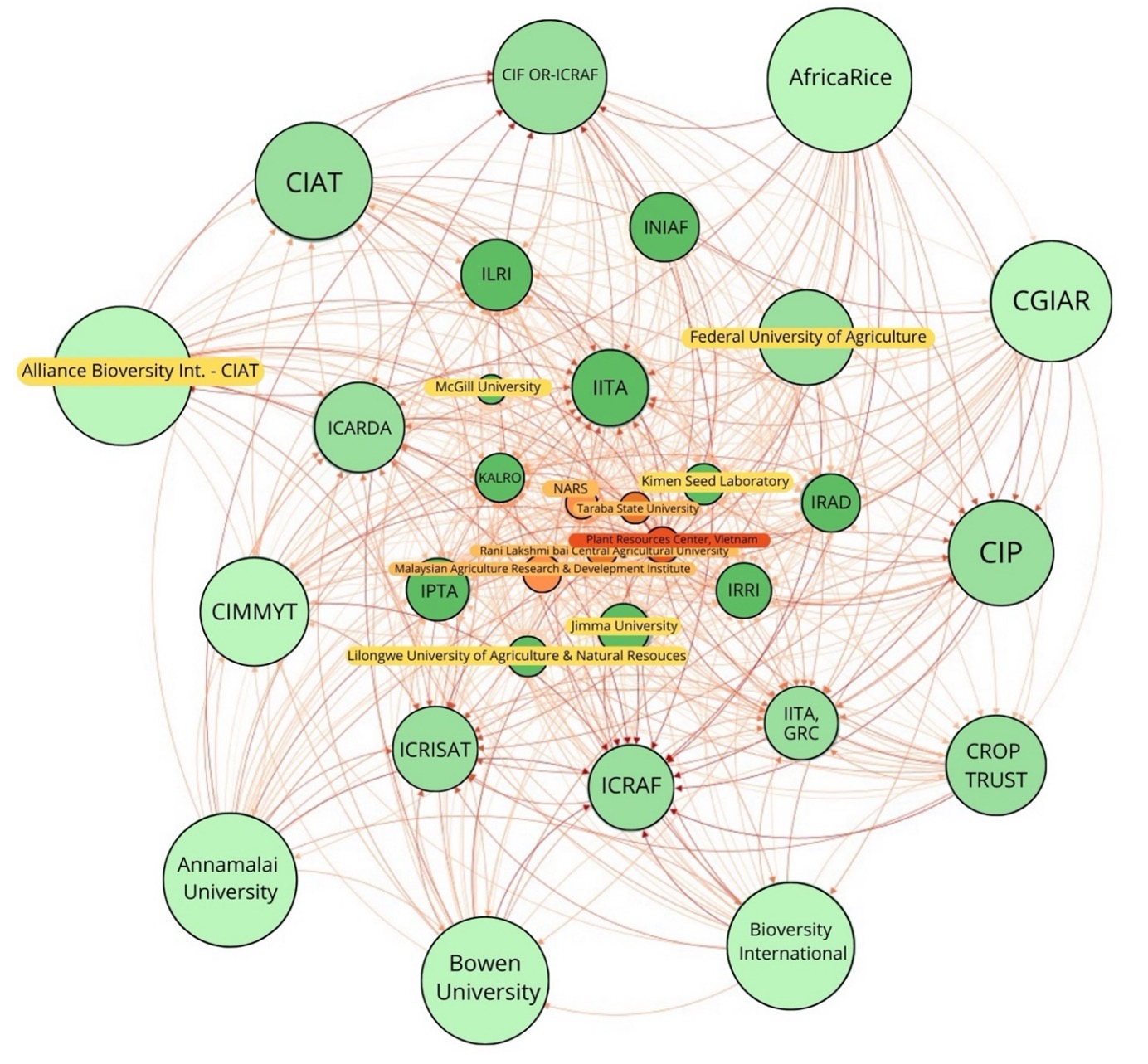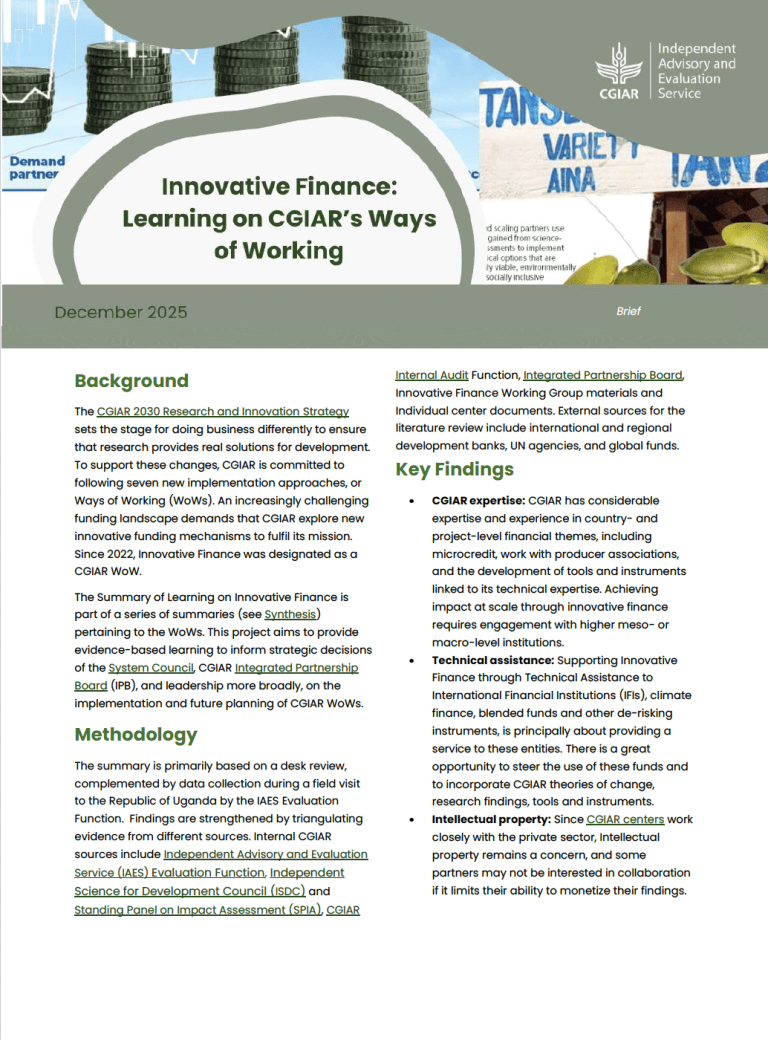What is social network analysis (SNA)?
Social Network Analysis (SNA) is an established method in sociology since the early 20th century that has gained prominence in recent decades due to technological advances. It is versatile and can be applied in a wide range of fields—including economics, biology, medicine, communications, and more—by identifying key actors within a social framework and decoding their interconnections. The approach offers a systematic methodology that employs graph theory to visually represent the structure of connections among entities.
In impact evaluations, SNA can usefully quantify the collaborative efforts of various stakeholders to achieve shared objectives. It can enhance evaluation processes by capturing and visualizing relationship nuances in interventions or programs, revealing insights into collaboration dynamics, identifying strong connections, and pinpointing gaps where interactions can be improved or established—thus boosting a group's overall effectiveness.
In SNA, networked structures are mapped out, with individual actors—such as people, groups, and organizations—referred to as ‘nodes’, and the relationships or interactions between them considered ‘edges’. These connections can be of any kind, such as family ties, friendships, professional, geographical, institutional, health-related, etc. Several tools can then be employed to study and interpret the mapped structures.
Several CGIAR studies have used SNA as a powerful way to measure the involvement of multiple stakeholders, including an evaluation of the influence and reach of the CGIAR Research Program on Climate Change, Agriculture and Food Security (CCAFS), and a systematic portfolio review of the International Maize and Wheat Improvement Center (CIMMYT)’s climate change research portfolio.
This blog shares key learnings from the CGIAR’s recent Genebank Platform evaluation. It demonstrates the as-yet-untapped potential of integrating SNA to generate and visualize evidence based on Quality of Science (QoS) evaluation criteria in process and performance evaluations.
SNA in the CGIAR Genebank Platform evaluation
The 2023 CGIAR Genebank Platform evaluation used SNA to gather evaluative evidence about the Platform (see SNA Report) to support the institutional learning of CGIAR and Crop Trust. SNA helped address key evaluation criteria such as relevance, effectiveness, coherence, and QoS. It also contributed to the assessment of three Genebank Platform modules, on policy, conservation, and use.
During the evaluation, SNA was employed to identify key players and examine their relationships, both within their groups and with other Genebank Platform stakeholders. From the total 186 responses received from an online survey, a refined subset of 122 was selected after data cleaning and processing. These responses were then transformed into matrices, highlighting connections and other network characteristics. The evaluators then used the open-source software program Gephi to depict the network’s spatial layout using force-directed algorithms that brought linked nodes together and separated unrelated ones, thus facilitating the data’s interpretability and clarity.
The SNA generated four visualizations: a network of professional collaborations, a communication and interaction network encompassing various stakeholders, a leadership network, and a network representing management decision-making and funding needs. Analysis of clusters formed in these networks showed that partners and users interacting through the Genebank Platform were moderately interconnected.
Key takeaways from using SNA in the Genebank Platform evaluation include:
- CGIAR should continue its efforts to strengthen its relationship with National Agricultural Research (and Extension) Systems (NARS) across countries.
- Although the professional network of the Genebank Platform includes CGIAR centers and genebanks with important roles in the conservation and policy modules, partners outside the CGIAR system can play a crucial role in meeting the needs of farmers and other user groups.
- CGIAR centers have worked hand-in-hand with non-CGIAR partners. The flow of communication between different stakeholders reiterated the significant value of the professional ties these partners developed and positioned the Genebank Platform as a central space where relevant information was exchanged.
- Internal CGIAR stakeholders play a crucial role in disseminating information about access to and availability of plant genetic materials and accessions. However, the network of non-CGIAR partners offers an opportunity to extend CGIAR's reach to end users, including farmers and community-based organizations.
- Non-CGIAR partners, especially NARS and academic and research institutions, serve as pivotal connectors for region-specific user subgroups, providing access to vital information on plant and crop diversity and conservation. This enables CGIAR to meet its objective of enhancing the reach and timely accessibility of germplasm by the ultimate user groups (i.e. farmers).
- Lastly, leveraging the broadcast potential of influential partners ensures the cost-effectiveness of future interventions. Strategies aimed at empowering local and influential partners can motivate them to strengthen their networks and implement projects independently at the ground level, thereby enhancing the overall effectiveness of CGIAR's developmental efforts.
Figure: Communication Patterns and Interactions Between Nodes or Partners on the Genebank Platform (Source: SNA Report)

Source: Sociographs were created using Gephi (an online software for SNA). The responses received for section on ‘partnerships and interactions’ from the online survey were utilized to create these maps.
Role and utility of SNA for CGIAR’s organizational learning
In the context of CGIAR's mission to advance global agriculture and food security, SNA emerges as a powerful tool that complements and supplements the data obtained from other quantitative and qualitative tools, thereby contributing to the subsequent set of learnings obtained during any evaluative study. This analytical method delves into the intricacies of network relationships and interactions, answering pivotal questions that can significantly influence CGIAR's strategies and outcomes.
SNA’s ability to identify key interconnected individuals and organizations is particularly relevant for CGIAR, which operates in a complex landscape of stakeholders, including researchers, farmers, governments, and NGOs. Understanding the role of these actors in collaborative networks—as well as the strength of their relationships—can guide CGIAR in forging effective collaborations and partnerships, which are critical for driving agricultural innovation and policy development. By analyzing how strong these connections are and whether they are unidirectional or bidirectional, CGIAR can identify not just the main participants in a network but also those deviating from the norm.
SNA also provides insights into the dynamics of information diffusion. By enabling the identification of potential gaps in interconnections among actors, the method can point to where CGIAR might strategically direct resources to strengthen those relationships. Such insights are invaluable in designing more inclusive and effective strategies that take into account the diverse range of stakeholders in the agricultural sector.
As SNA centers on actors and their relationships, rather than traditional indicators such as scientific outputs or outcome statements, results from this approach uncover insights that cannot be derived from evaluations that focus only on implementation, monitoring, and reporting mechanisms. SNA provides a methodological framework to understand and optimize the dynamics of the complex networks that CGIAR programs and initiatives operate within—thereby supporting its mission to transform global food and agriculture systems.
Also read:
- Report: Social Network Analysis: Evaluation of the CGIAR Genebank Platform
- Blog: 'Alone We Can do so Little; Together We Can do so Much'



